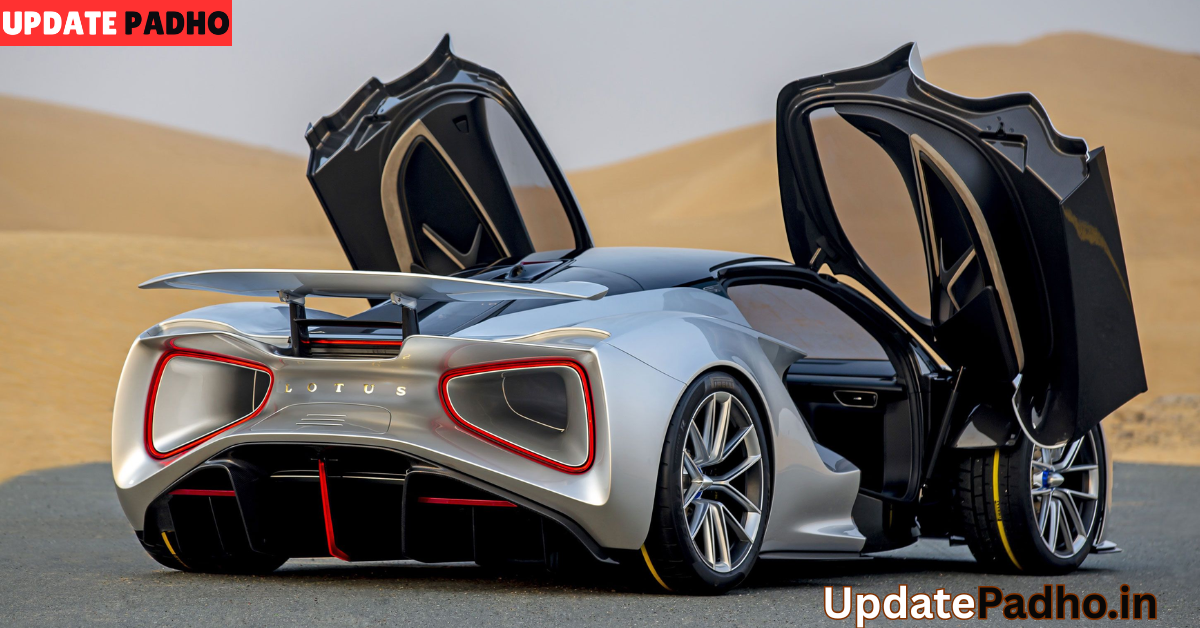In the world of performance cars, few names evoke the purity of driving like Lotus. Known for its mantra of “simplify, then add lightness,” Lotus has long been the darling of enthusiasts who value handling finesse over brute force. But as the automotive world pivots toward electrification, even icons must evolve. Enter the Lotus Type 135—a bold, all-electric sports car that promises to carry the brand’s DNA into a new era without compromise.
⚡ A New Chapter Begins
Slated for release in 2027, the Lotus Type 135 is more than just another EV—it’s the spiritual successor to the beloved Emira and Elise. Built on Lotus’s innovative LEVA (Lightweight Electric Vehicle Architecture), the Type 135 is designed to be 37% lighter than the Emira V6. That’s a staggering achievement in a segment where battery weight often bloats curb figures and dulls dynamics.
The LEVA platform is modular, scalable, and engineered specifically to preserve the low-slung stance and nimble handling Lotus is famous for. Unlike many EVs that suffer from high ride heights due to battery packaging, the Type 135 uses a die-cast rear sub-frame with interchangeable components, allowing for a lower center of gravity and better weight distribution.
🏎️ Performance Meets Purity
While final specs are still under wraps, early reports suggest the Type 135 will feature a single rear-mounted electric motor producing 350kW (469bhp). For those craving more, the platform can accommodate dual motors with up to 650kW (872bhp)—a figure that would place it in hypercar territory. This flexibility hints at multiple variants, possibly including a track-focused edition.
But Lotus isn’t chasing numbers alone. The brand’s ethos has always been about the driving experience. Expect razor-sharp steering, minimal body roll, and a chassis that communicates every nuance of the road. In a world of autonomous tech and digital filters, the Type 135 aims to be a visceral, analog-feeling machine—just with electrons instead of petrol.
💰 Price and Positioning
The Type 135 will start at £75,000 (around $95,000), positioning it as a premium sports car rather than an entry-level EV. While some fans may lament the departure from the Elise’s sub-£20k origins, the reality is that developing a bespoke electric platform is expensive. Still, Lotus is targeting annual sales of 10,000–15,000 units, nearly double the Emira’s volume—a sign of confidence in its appeal.
🌍 Built for a Global Audience
Manufactured in Hethel, UK, the Type 135 is part of Lotus’s broader strategy to become a global EV performance brand. With the Evija hypercar, Eletre SUV, and upcoming Type 133 sedan already in the pipeline, the Type 135 completes a quartet that spans luxury, utility, and raw performance. It’s a clear signal that Lotus isn’t just dipping its toes into electrification—it’s diving in headfirst.
🧬 Design: Evolution, Not Revolution
Visually, the Type 135 draws inspiration from the Evija and Emira, blending sculpted aerodynamics with a minimalist, driver-focused cabin. Early renderings show a low, wide stance with aggressive intakes and a sleek silhouette. It’s unmistakably Lotus, but with a futuristic edge. Expect lightweight materials, digital interfaces, and a cockpit that prioritizes engagement over distraction.
🔋 The Battery Question
One of the biggest challenges for electric sports cars is battery weight and placement. Lotus’s LEVA architecture tackles this head-on by offering variable layouts and battery sizes. This means the Type 135 can be tailored for different driving styles—from long-range grand touring to short-burst track days. While exact range figures haven’t been confirmed, expect competitive numbers that balance performance with practicality.
🚀 Why It Matters
The Lotus Type 135 isn’t just another EV—it’s a statement. It proves that electric cars can be light, agile, and emotionally engaging. It challenges the notion that performance must come at the cost of connection. And most importantly, it shows that heritage and innovation can coexist.
For purists, the Type 135 may be the car that finally bridges the gap between analog thrills and digital progress. For Lotus, it’s the car that could redefine its future.



